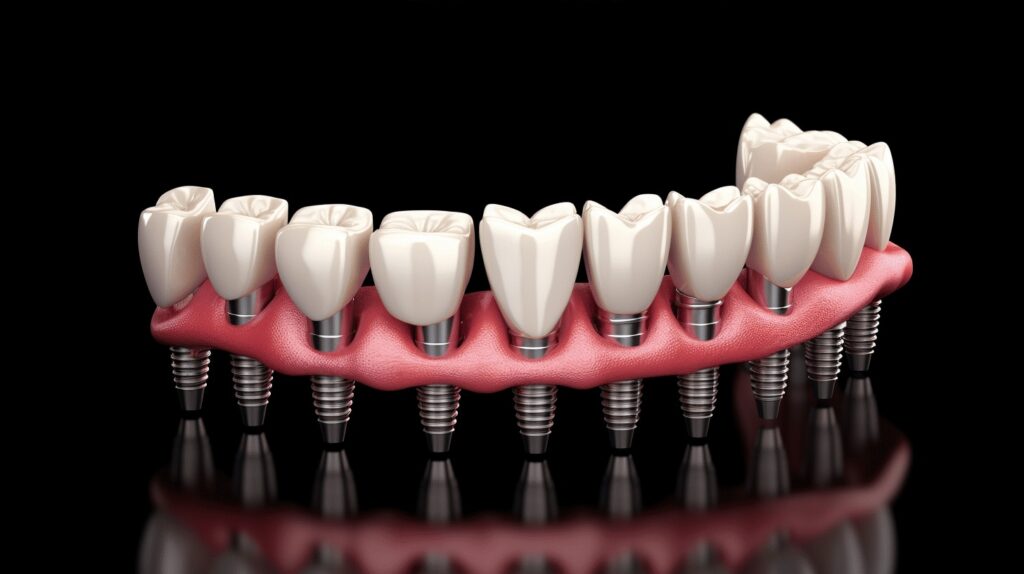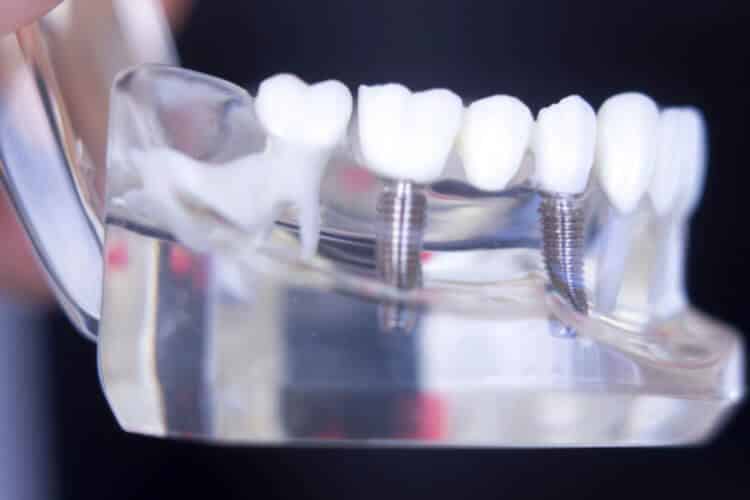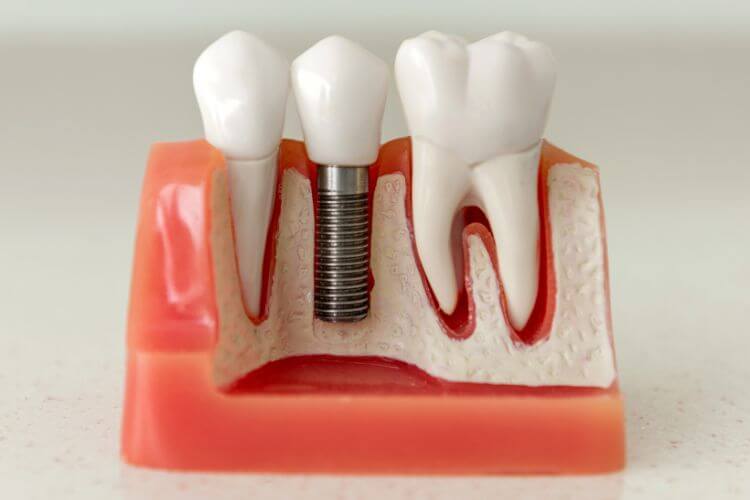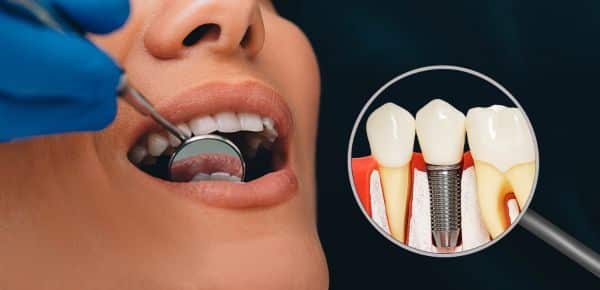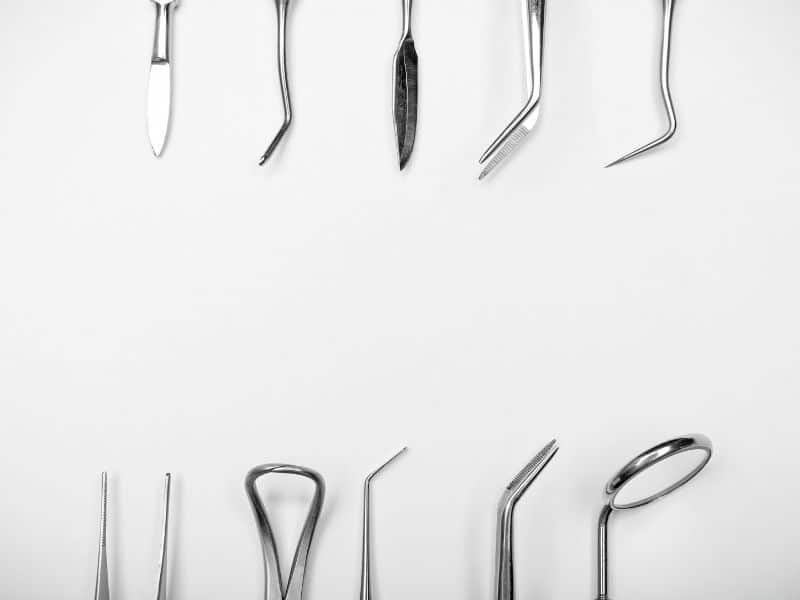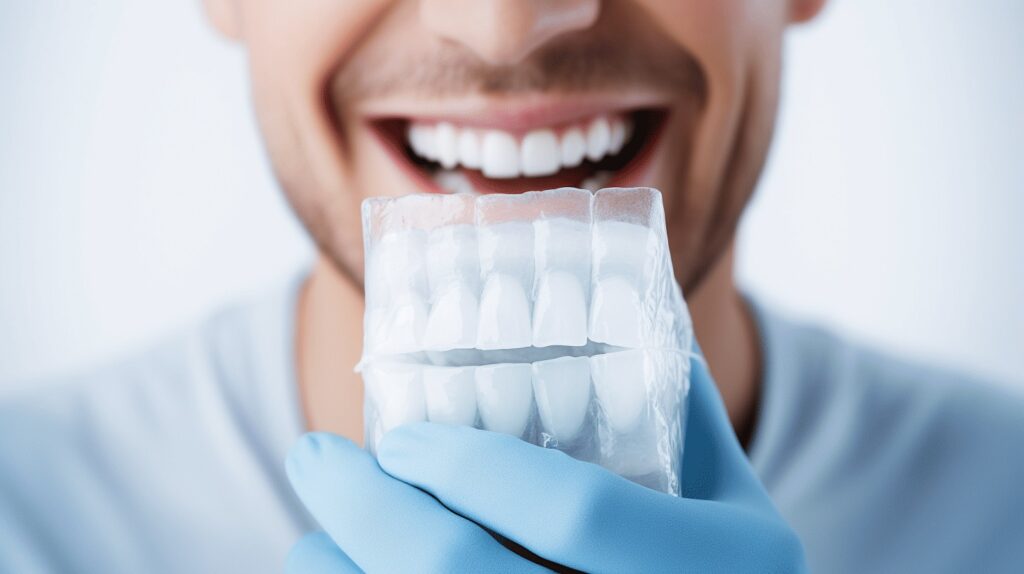We’re glad you’re taking the first step towards a healthier, more confident smile.
As one of the most celebrated advancements in dental technology, dental implants have quickly risen to fame. However, they may not be the perfect solution for everyone.
Not to worry though – a broad range of alternative options are ripe for exploration, and we’re here to talk about them. 💫
From dental bridges to dentures to bone grafting, this article will provide you with an insightful overview of viable alternatives to dental implants.
So, grab your cup of coffee ☕, sit back, and let’s demystify the good-ole-world of dental procedures together!
Table of Contents
Dental Implants: A Brief Overview
You may have heard the term ‘dental implants’, but what exactly are they?
With advancements in dental technology happening in leaps and bounds, we’re here to provide a brief overview of this fascinating subject.
In this section, we’ll discuss what dental implants are, their benefits, and the process involved.
So let’s get started.
Simply put, a dental implant is a small titanium post that serves as a replacement for the root part of a missing tooth.
The titanium fuses with the jawbone, creating a solid ‘anchor’ for a replacement tooth.
Sounds exciting, right? Now, let’s delve into the benefits.
First and foremost, it’s important to note that dental implants are the closest you can get to healthy, natural teeth.
With the strength of titanium, they’ll let you confidently eat, smile, laugh, and engage in normal activities without worrying about your teeth.
Here are a few more benefits to jot down:
- Increased comfort, as the dental implants become part of you.
- Improved appearance, as dental implants look and feel like your own teeth.
- Better speech, as poorly fitted dentures can make the words slur or mumble.
- Durability, as implants are very resilient and last many years.
Now, you might be wondering about the process of getting dental implants.
While it may seem daunting, rest assured, it’s a well-established, safe treatment.
In brief, the process involves three stages:
- Placing the implant (the small titanium post) into the jawbone.
- Allowing for healing and growth (the bone grows around the implant, securing it).
- Attaching the new tooth.
Remember, the success of dental implants relies heavily on the health of your gums and bones.
Therefore, good oral hygiene is crucial for maintaining your dental implants.
In conclusion, dental implants are more than just a dental procedure. They are an investment for long-term oral health.
Keen on learning more? Stick around, as we have a lot more dental-related insights to share with you.
Alternative Dental Procedures
There’s no denying the importance of a bright smile and healthy teeth. It takes more than just regular brushing to maintain them in top condition.
There are times when, despite your best efforts, to maintain their integrity, it becomes necessary to resort to a range of alternative dental procedures.
Dental Bridges
Step into the world of restorative dentistry with us and discover the transformative power of dental bridges! 🌉
Just like the name suggests, dental bridges “bridge” the gap created by one or more missing teeth, leading to a stunningly revitalized smile.
To put it simply, a dental bridge comprises two or more crowns for the teeth on either side of the gap (the “abutment teeth”) and a false tooth/teeth in between.
These false teeth, known as “pontics,” fill up spaces where teeth are missing, being either cemented onto natural teeth or dental implants that serve as anchors.
Benefits and Drawbacks of Dental Bridges 🦷💭
Of course, the appeal of dental bridges is not purely aesthetic. Their function extends beyond mere visual appeal.
Here are some of the perks and pitfalls of dental bridges:
- Confidence Boost: They rejuvenate your smile, boosting your self-esteem sky-high! 💫
- Functionality: They restore the ability to chew and speak properly. Speaking with missing teeth can be a struggle—dental bridges to the rescue!
- Shape Maintenance: They help maintain the shape of your face. The loss of teeth can lead to a sagging facial structure; bridges help prevent this.
- Bite Correction: They distribute the forces in your bite properly by replacing missing teeth.
However, it’s not all sunshine and rainbows.
Dental bridges do have a few potential drawbacks to keep in mind:
- Tooth Sensitivity: Natural teeth caps require removal for crown placement, which can lead to temporary tooth sensitivity.
- Maintenance: Bridges, on occasion require more careful cleaning than natural teeth.
- Durability: Although durable, dental bridges may need replacements, particularly if not taken care of properly.
After weighing the pros and cons, if you decide that a bridge could be the right solution for you, it’s time to explore the types.
Types of Dental Bridges 🗂️
Did you know?
There are four main types of bridges to choose from, each with their unique operational style and benefits:
- Traditional Dental Bridges: The ‘go-to’ option, involving creating a crown for the tooth or implant on either side of the missing tooth, with a pontic in between.
- Cantilever Bridges: Used when there are adjacent teeth on only one side of the missing tooth or teeth. It’s a less common option due to its lower support structure.
- Maryland Bonded Bridges: These are made of a metal or porcelain framework, attached onto the backs of adjacent teeth.
- Implant-supported Bridges: As the name indicates, these are supported by implants. Generally, one implant is surgically placed for every missing tooth, and these implants hold the bridge in position.
Bringing this discussion to a close, dental bridges are a prominent solution for missing teeth, endowed with functional and aesthetic benefits.
Just remember, the decision should always keep in mind your personal needs, oral health condition, and professional dental advice.
After all, your smile is your richest ornament, and preserving it requires careful choices! 😊🦷
Dentures
The Perfect Solution to Fill in the Gaps🙂
Dentures, as we commonly refer to them, are more than just artificial teeth. They’re a marvelous dental solution that does not only replace missing teeth but also the lost gum portion, offering improved functionality, enhanced aesthetics, and much-more-needed confidence to the wearer.
They’re like the special effects of dentistry, providing the perfect landscape for your mouth and letting you enjoy daily activities without worrying about an incomplete smile.
Definition and Function of Dentures
Typically, dentures are custom-made prosthetic devices designed to replace missing teeth.
Not a new concept, but technology has revolutionized their design, function, and comfort in recent years. They’re like a good pair of gloves, they mimic the real teeth and gums so subtly and accurately that only you will know the secret behind your un-ending smile.
Dentures work much more than just posing for a photo. They aid in chewing food, uphold the face’s shape and structure, and help articulate words properly.
Moreover, dentures can suppress premature ageing caused by the collapsed shape of the mouth due to missing teeth.✨
Benefits and Drawbacks of Dentures
Truly, every coin has two sides. Let’s start with the bright side, shall we?
When adequately fitted, dentures can significantly improve your oral aesthetics and function. They give you back your freedom to smile and eat with no hesitation or discomfort.🍎🥦 They provide support to your facial muscular system, giving you a youthful appearance.😊
Now let’s consider the flip side.
Despite their numerous benefits, the process of getting used to dentures can take some time. There could be initial soreness, discomfort, and even trouble in speaking and eating during the adaptation phase.
However, with patience and regular check-ups, these issues tend to mitigate.
Types of Dentures
Just like there are different flavors of ice cream, there are various types of dentures to cater to individual needs.
Two primary types are complete dentures, which replace all the teeth, and partial dentures when only a few teeth need replacement.
Complete dentures can be either “conventional” or “immediate.” Conventional dentures are made after the teeth have been removed and the gum tissue has healed (usually taking 4 to 6 weeks), while immediate dentures are made in advance and can be positioned as soon as the teeth are removed.
On the other hand, partial dentures rest on a metal framework that attaches to your natural teeth, providing a seamless finish and feel.
In essence, dentures are capable of more than just restoring your smile, they are a pathway leading to renewed confidence, comfort, and yes, that photogenic smile you always desired.
😃 Next time we delve into the maintenance and longevity of dentures, until then keep smiling!
Bone Grafting
Let’s delve into the world of Bone Grafting! 💉
🦴 This innovative medical procedure has revolutionized bone healing and regeneration like never before.
But what exactly is it? Why is it important, and how does it work? We’ve captured all the fascinating details below!
Definition of Bone Grafting
Bone grafting, friends, is a groundbreaking surgical procedure that repairs and regenerates bones that have been damaged due to injury, disease, or aging.
The science behind it is extraordinary! In essence, it involves taking bone from another part of the body (or sometimes, synthetic bone materials) and placing it at the repair site.
This transplanted bone prompts your body to grow new bone, and ta-da! Over time, your body replaces the graft with its bone, leading to full recovery.
Procedure and Process of Bone Grafting
Now, in terms of the actual procedure and process of bone grafting, there’s a fair bit to unpack.
First, your doctor identifies the need for a bone graft and locates a suitable bone donor site (if using your bone). The bone is harvested, processed to the right size and shape, and then transplanted to the damaged area.
A successful graft encourages your body to grow new bone around the transplanted piece, essentially filling in the gap or strengthening the weakened area.
👉 Quick Snippet: Our bodies are natural healers. To take advantage of this, the graft acts as a scaffold where new bone can grow.
So, the transplanted bone or synthetic material doesn’t stay there forever but gradually dissolves as your body grows new bone. Fascinating, isn’t it?
Benefits and Drawbacks of Bone Grafting
As with any medical intervention, bone grafting comes with its pros and cons:
- Benefits:
- Bridging the gap: Bone grafting effectively fills in gaps in your bones, which can be life-changing for those suffering from conditions like osteoporosis.
- Healing and restoring function: Bone grafts can help heal fractures, fused joints, and even restore function in cases where damage has led to loss of bone.
- Drawbacks:
- Complications and risks: As a surgical procedure, bone grafting can present risks such as infection, nerve damage, and graft rejection.
- Pain and recovery time: Post-procedure, there can be pain and required downtime as the body heals.
We’ve been thrilled to guide you through the ins and outs of bone grafting!
It’s vital to consult your healthcare provider about potential risks and benefits before considering any medical procedure.
But armed with a little knowledge (thanks to us 😊), you’re now in a better place to start that conversation!
Comparing Dental Implants and Alternative Procedures
Navigating through the sea of prosthodontic options requires a comprehensive understanding of your choices.
Today, we’re going to focus on making that selection easier for you by comparing dental implants with their common alternatives. We’re determined to empower you with the essential knowledge so that you can confidently engage in discussions with your dental healthcare provider.
Now, let’s unravel the mystery surrounding dental options!
Factors to Consider when Choosing Between Dental Implants and Alternatives
Before diving into the specifics, it’s crucial to highlight the different factors you need to consider when deciding between dental implants and their alternatives:
- Safety: The primary consideration, unsurprisingly, is how safe a treatment option is. When safety is in question, dental implants often win the argument due to their biocompatibility and low risk of infection.
- Reliability: Another significant aspect to ponder over is the reliability and success rate of the procedure.
- Cost-effectiveness: People often forget to factor in long-term maintenance costs. Initial procedure costs often mask the total cost, so a cheaper method might not necessarily be cost-effective in the longer run.
- Aesthetics: Last but not the least, we all want our teeth to look natural and visually pleasing.
Now, equipped with this checklist, let’s plunge into each treatment option, shall we?
Cost Comparison
One of the most crucial deciding factors is often the investment associated with the procedure. Let’s take a quick snapshot:
- Dental Implants: Pricier upfront but require almost no additional maintenance costs.
- Dentures: Less costly initially but demand regular upkeep, which translates to higher long-term costs.
- Dental Bridge: In-between dental implants and dentures in terms of initial and maintenance costs.
Long-term Durability and Maintenance Comparison
Long-term comfort and durability also play a significant role when selecting your treatment. Here’s a glimpse:
- Dental Implants: Known for exceptional longevity, often lasting a lifetime with minimal maintenance.
- Dentures: Require regular adjustment due to bone resorption under the denture and typically need replacement every five years or so.
- Dental Bridge: Usually last 10 to 15 years with proper care but require daily cleaning under the pontic that connects the teeth.
Aesthetics and Natural Look Comparison
Finally, it’s about how we can confidently flaunt those pearly whites:
- Dental Implants: Mimic natural teeth most closely. They not only replace the missing tooth but also the root, ensuring facial structure isn’t compromised over time.
- Dentures: Can look just as natural as implants depending on their fit, but people often struggle with comfort and stability, which affects confidence during social interactions.
- Dental Bridge: Typically blend well with natural teeth, but they don’t address potential changes in facial structure due to bone loss.
By all means, this comparison isn’t definitive.
The right choice will always depend on your unique oral health situation, priorities, and lifestyle. Your dentist, undoubtedly, is the best person to offer advice tailored explicitly to you.
Consider these aspects as a starting point for your conversation. Never forget: Your smile, your choice!
Conclusion
Embarking on the journey to a perfect smile can seem daunting with the plethora of options available. But remember, while dental implants are a great choice for many, they’re not the only option.
Dental bridges, dentures, and bone grafting procedures each come with their unique benefits, perfect for different circumstances and budgets.
At Wilshire Smile Studio, we offer all these services and more, taking into consideration your specific needs and circumstances. We are all about providing you with the best dental care for all scenarios, with affordable pricing, customized financing options, and top-notch professional care in comfortable and inviting surroundings. Our goal remains to help you achieve a healthy, radiant smile that you’re proud to showcase.
In the end, the right choice for your dental health is always a personal one. The best decision you can make towards this cause is to stay informed, ask the right questions, and trust in the care of a dedicated team such as ours at Wilshire Smile Studio.
Here’s to your journey towards the perfect smile, honed by the right choice. We hope to see you soon.
Secure your oral health today by booking a free consultation with us online or calling (323) DENTIST (323-336-8478)
Frequently Asked Questions
1. What are the alternatives to dental implants?
Some alternatives to dental implants include dental bridges, removable partial dentures, and implant-supported dentures.
2. What are dental bridges?
Dental bridges are fixed appliances that replace missing teeth by bridging the gap between two existing teeth. They are attached to the adjacent teeth for support.
3. What are removable partial dentures?
Removable partial dentures are removable appliances that replace missing teeth and are held in place by clasps or attachments. They can be taken out for cleaning.
4. What are implant-supported dentures?
Implant-supported dentures are dentures that are anchored to dental implants. They provide improved stability and prevent bone loss in the jaw.
5. Are dental implants the best option for tooth replacement?
Dental implants are generally considered the best long-term solution for tooth replacement due to their durability, functionality, and natural appearance. However, the best option may vary depending on each individual’s specific needs and circumstances.


